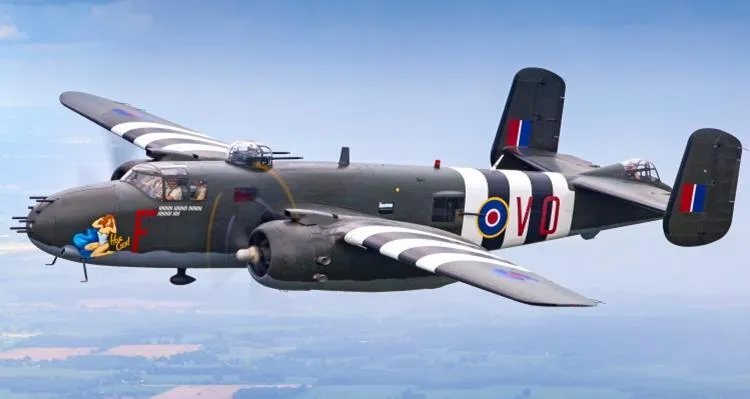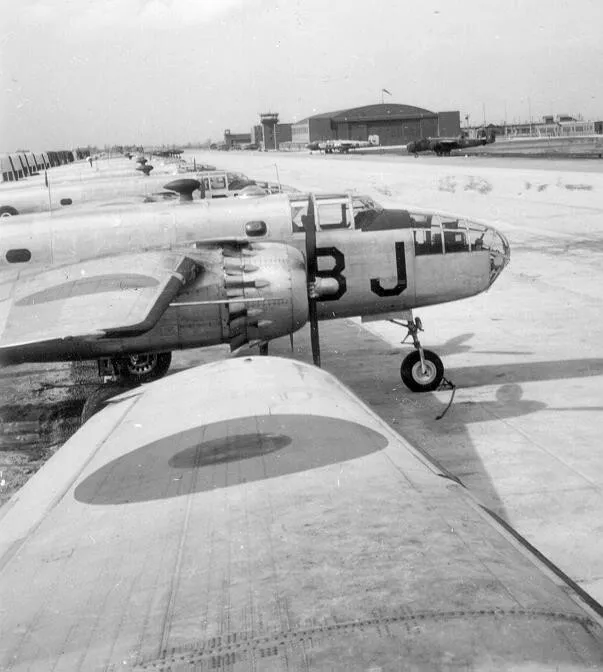Kitson, Derek Ronald Lonsdale (Pilot Officer)
Killed in Flying Accident 1945-May-11


Birth Date: 1924-October-08
Born:
Parents: Son of James William and Clarise Lonsdale Kitson, of Beverley, Yorkshire, England.
Spouse:
Home:
Enlistment:
Enlistment Date: unkown date
Service
RAFVR
Unit
5 OTU- Operational Training Unit
Base
Boundary Bay, British Columbia, Canada
Rank
Pilot Officer
Position
Service Numbers
167994
Crew or Other Personnel
Mitchell HD314
Accident Card - North American Mitchell Mitchell II series ii serial:HD314
This accident involved 1 aircraft on 1945-May-11. Mitchell II s/n HD314.
This accident involved 3 people. Jackson F, Jones JA, Kitson DR
This accident had 3 fatalities. Pilot Officer Derek Ronald Lonsdale Kitson RAFVR Killed in Flying Accident service no:167994 Mitchell HD314, Sergeant John Arthur Jones RAFVR Killed in Flying Accident service no:1351966 Mitchell HD314, Sergeant Frederick Jackson RAFVR Killed in Flying Accident service no:1674598 Mitchell HD314
Mitchell serial: HD314

Canadian Warplane Heritage Museum
The North American B-25 Mitchell is an American medium bomber that was introduced in 1941 and named in honor of Major General William "Billy" Mitchell, a pioneer of U.S. military aviation. Used by many Allied air forces, the B-25 served in every theater of World War II, and after the war ended, many remained in service, operating across four decades. Produced in numerous variants, nearly 10,000 B-25s were built.
The North American B-25 Mitchell was flown by the RCAF during and after the Second World War. The RCAF flew the B-25 Mitchell for training during the war and continued flying operations after the war, in Canada with most of 162 Mitchells received. The first B-25s had originally been diverted to Canada from RAF orders. These included one Mitchell Mk. I, 42 Mitchell Mk. IIs, and 19 Mitchell Mk. IIIs. No 13 (P) Squadron was formed unofficially at RCAF Station Rockcliffe in May 1944 and flew Mitchell Mk. IIs on high-altitude aerial photography sorties. No. 5 OTU (Operational Training Unit) at Boundary Bay, British Columbia and Abbotsford, British Columbia, operated the B-25D Mitchell in a training role together with B-24 Liberators for Heavy Conversion as part of the BCATP. The RCAF retained the Mitchell until October 1963.
No. 418 (Auxiliary) Squadron received its first Mitchell Mk. IIs in January 1947. It was followed by No. 406 (Auxiliary), which flew Mitchell Mk. IIs and Mk. IIIs from April 1947 to June 1958. No. 418 Operated a mix of Mk. IIs and Mk. IIIs until March 1958. No. 12 Squadron of Air Transport Command also flew Mitchell Mk. IIIs along with other types from September 1956 to November 1960. In 1951, the RCAF received an additional 75 B-25Js from USAF stocks to make up for attrition and to equip various second-line units.. Wikipedia and Harold Skaarup web page
Aircraft Images
Mitchell HD314
Mitchell Mitchell II series ii HD314
Ex USAAF B-25D-35-NA serial number 43-3782, ex RAF Mitchell Mk. II HD314. Officially identified as a B-25D in early RCAF records. Delivered to stored reserve. Issued on 9 March 1944 to No. 5 Operational Training Unit at Boundary Bay, BC. Category A crash at Boundary Bay aerodrome on 11 May 1945. Allocated to No. 3 Repair Depot in Vancouver on 17 May 1945 for scrapping.1944-02-21 Taken on Strength Western Air Command as a new aircraft 2019-08-20
1945-May-11 Accident: 5 Operational Training Unit Loc: Boundary Bay British Columbia Aerodrome Names: Jackson | Jones | Kitson
1945-06-14 Struck off Strength Struck off, scrapped 2019-08-20
Unit Desciption
5 OTU (5 Operational Training Unit)
The Operational Training Unit (OTU) was the last stop for aircrew trainees. They spent 8 to 14 weeks learning to fly operational aircraft (Hawker Hurricane or Fairey Swordfish, e.g.). The instructors had experience in actual operations, and often were posted to OTUs after their operational tour.